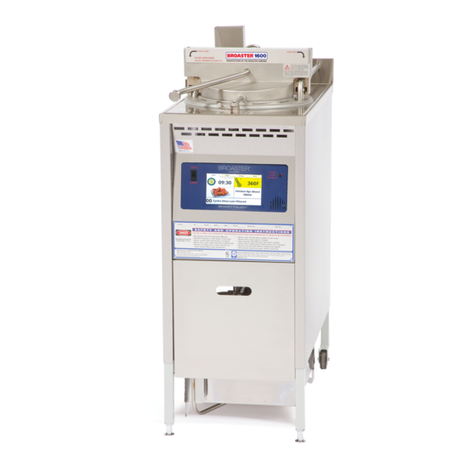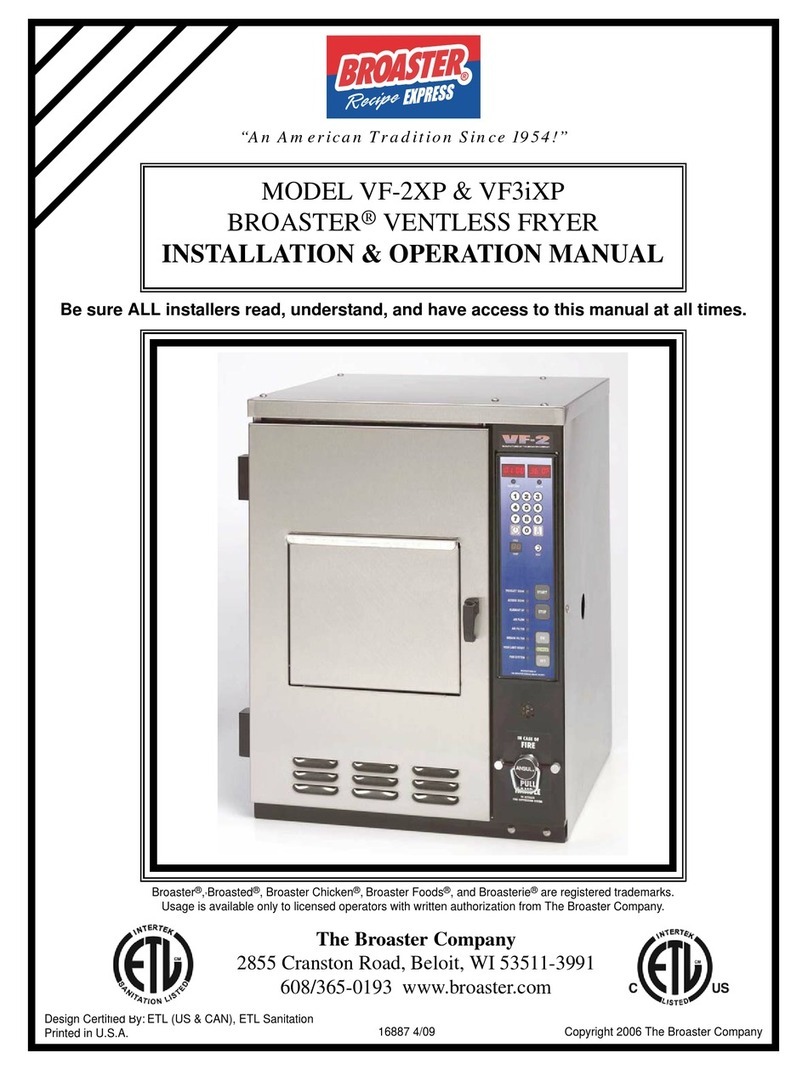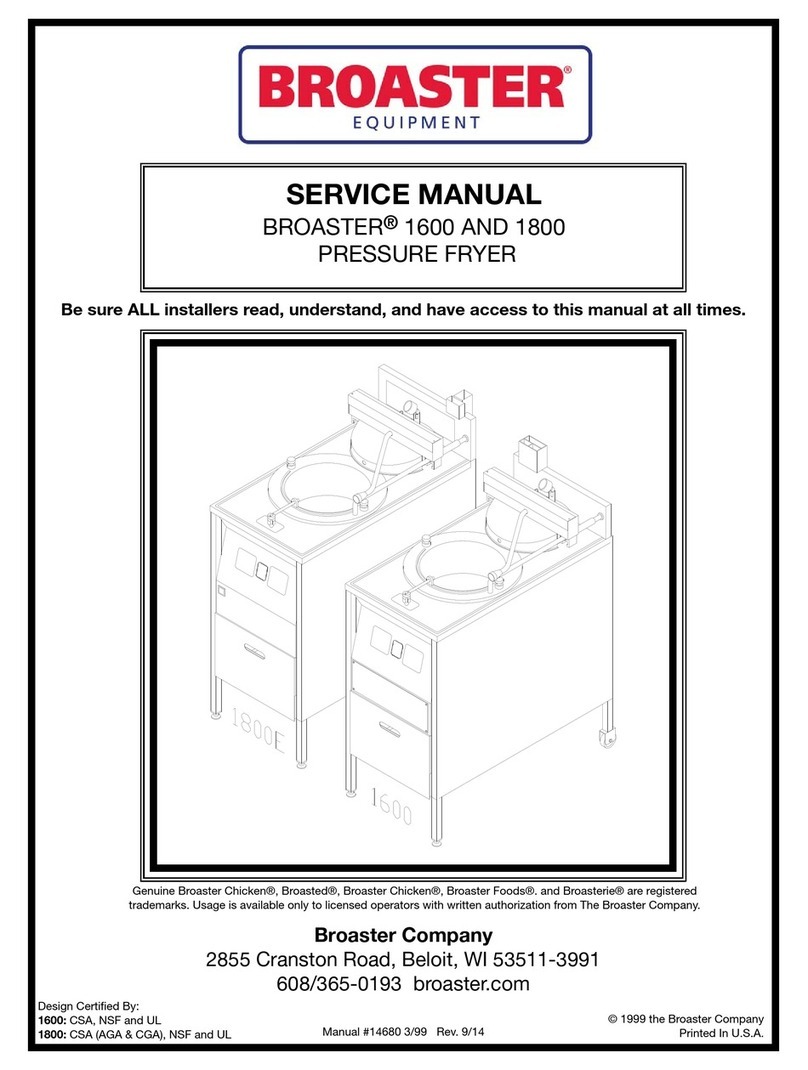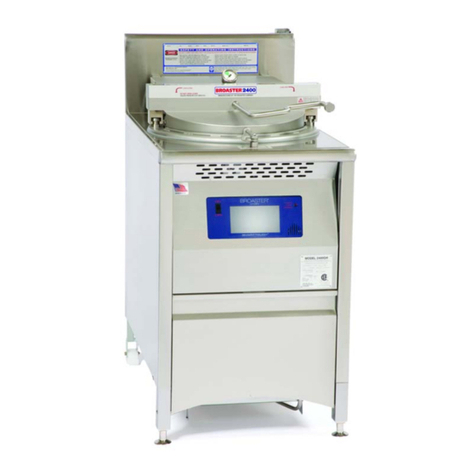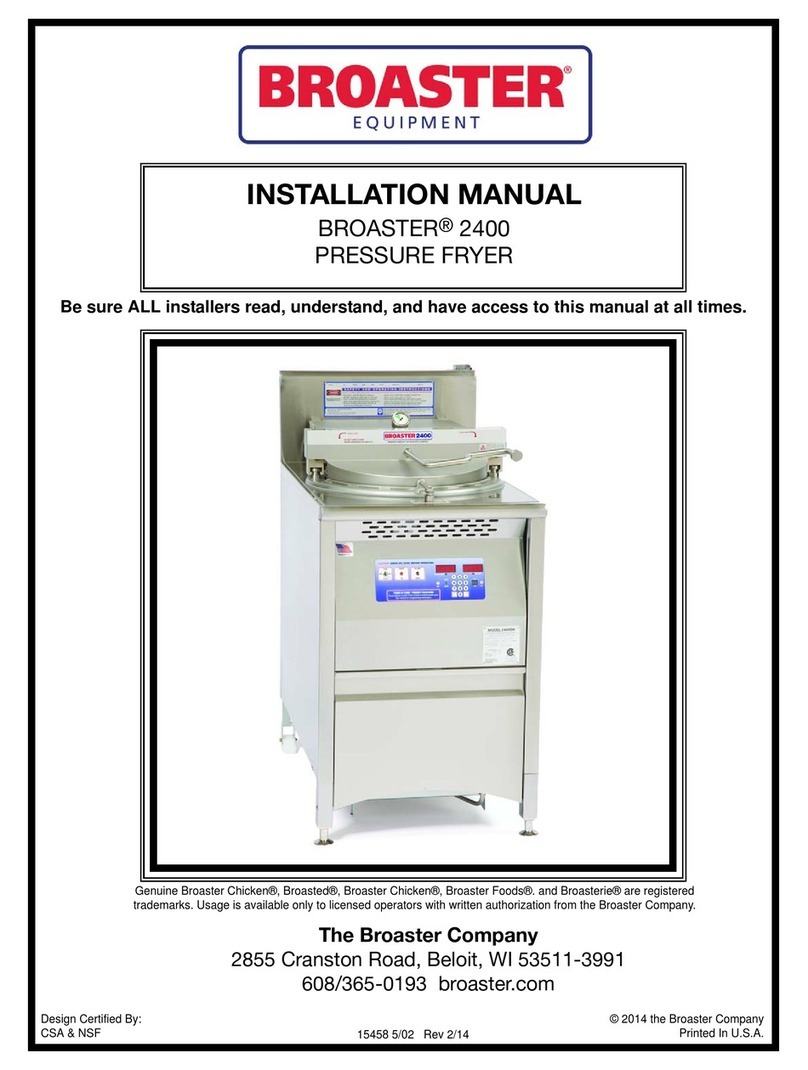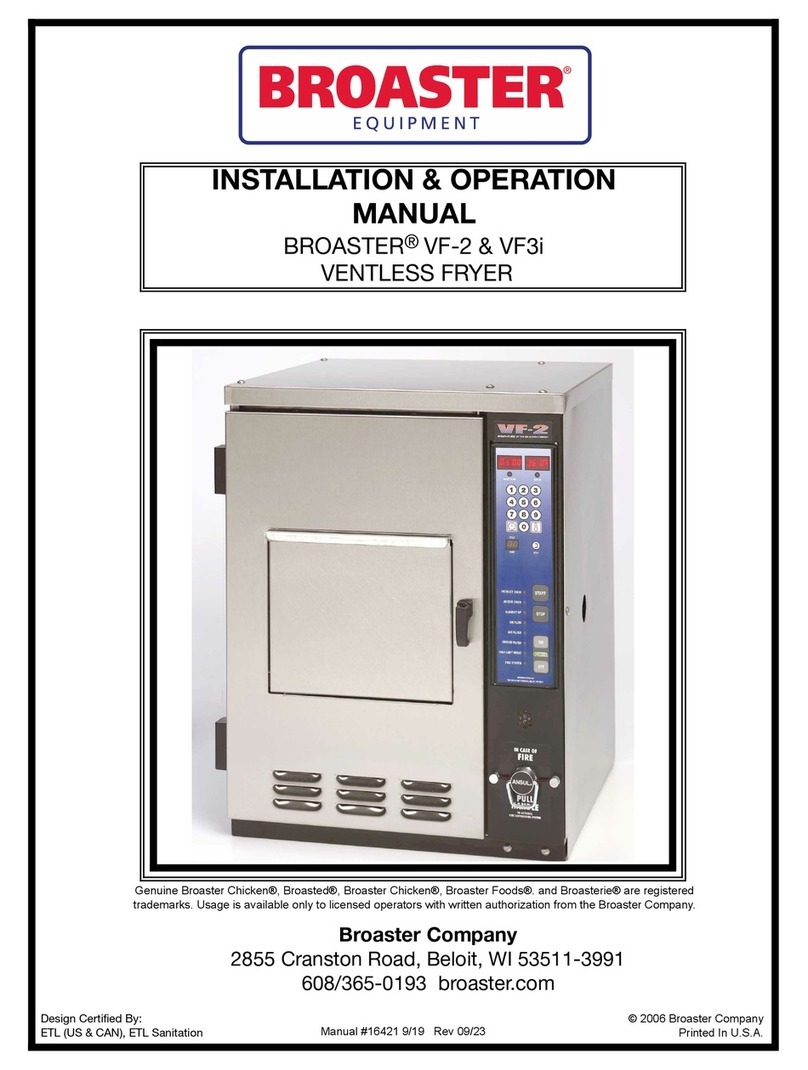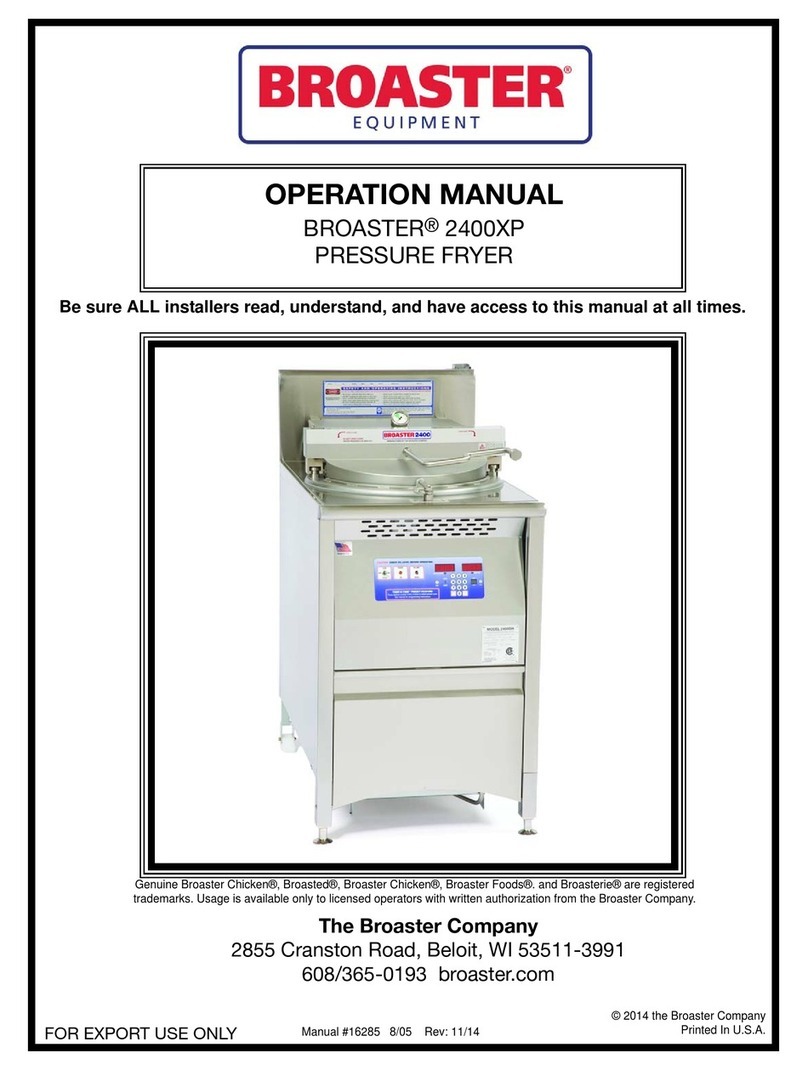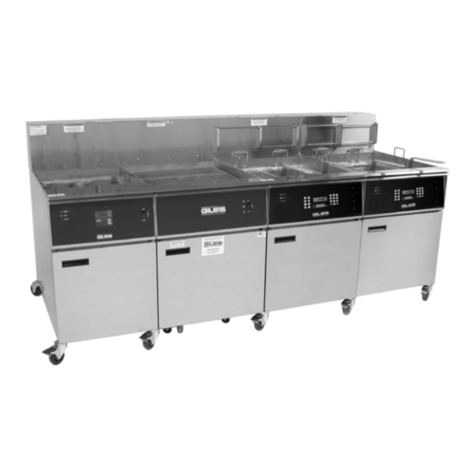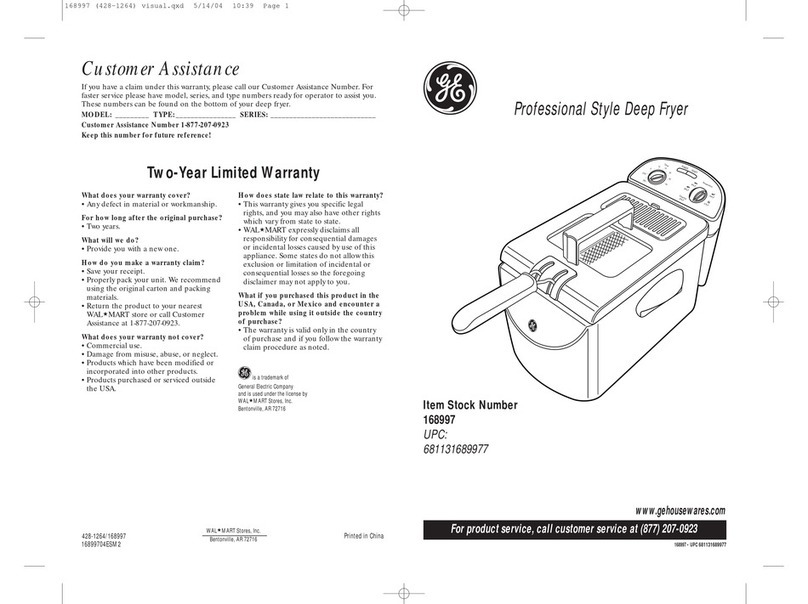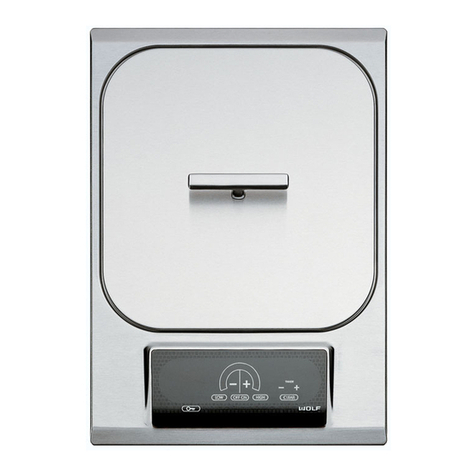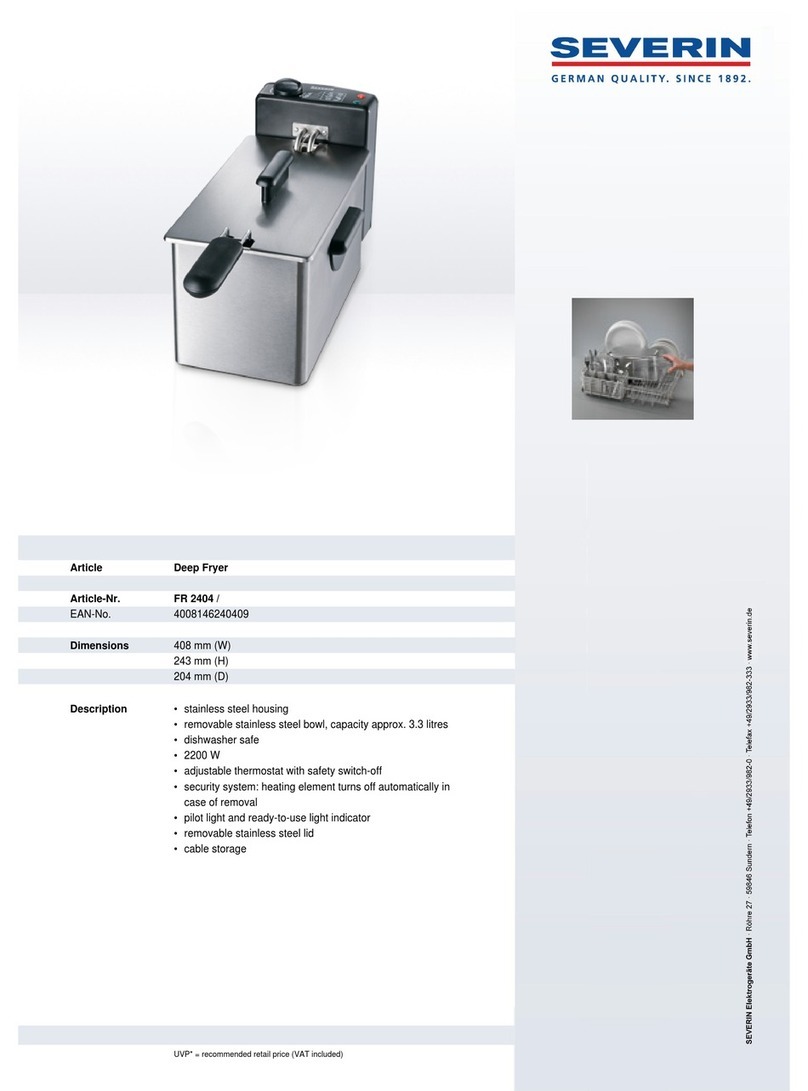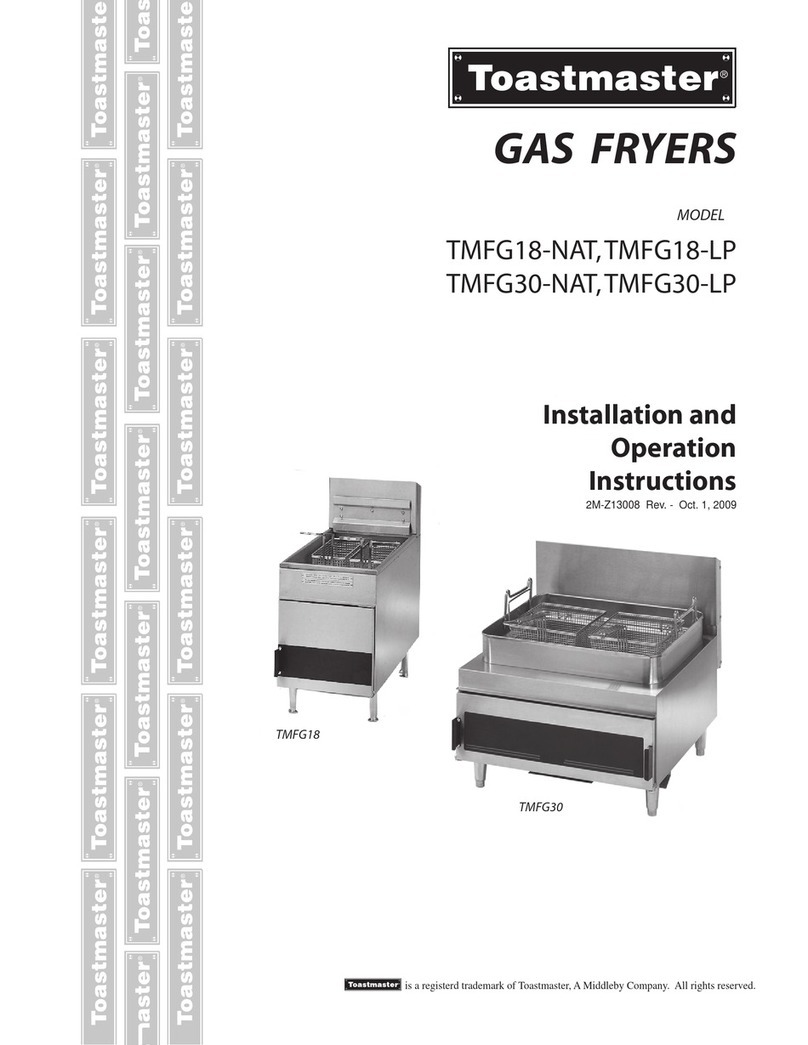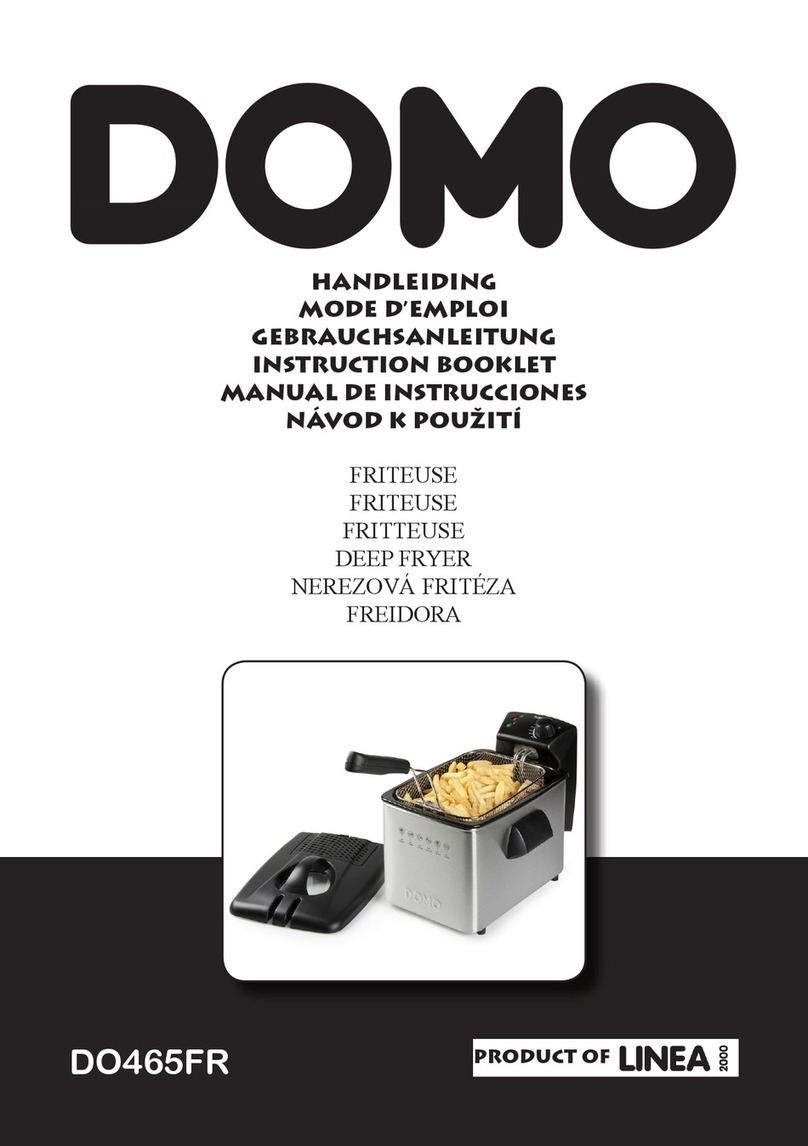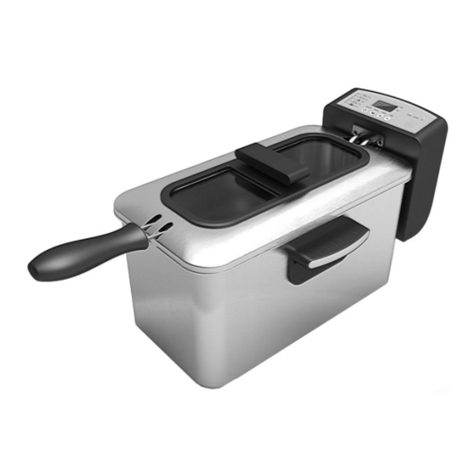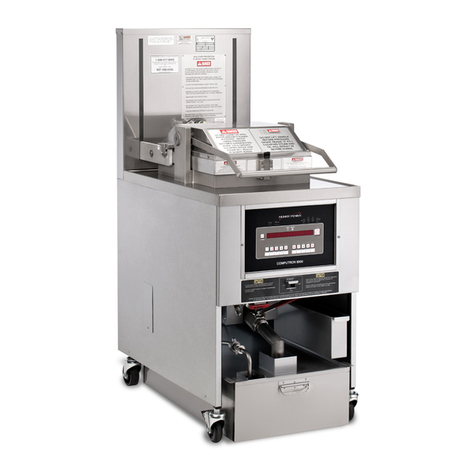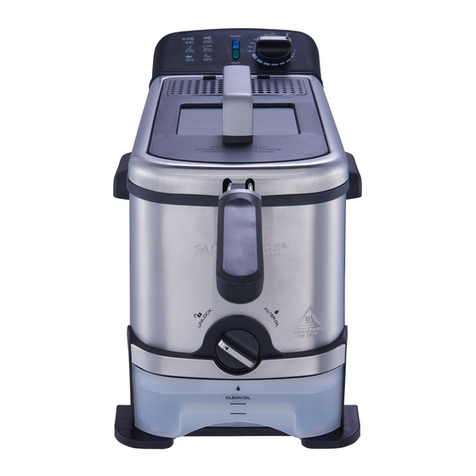
W-1
All adjustments and repairs shall be made
by an authorized Broaster Company repre-
sentative.
If there is a power failure, turn power switch
OFF. Turn the gas valve OFF. DO NOT
attempt to operate unit during a power fail-
ure.
Failure to read and
understand this manual
completely could result in serious injury
or death. Be sure ALL operators read,
understand and have access to this
manual at all times.
Rags or paper containing
cooking oil can catch fire
if exposed to heat. Laundering will not
remove the oil. Dispose of all oil-soiled
papers and rags in a trash container that
is in a ventilated area away from all
cooking equipment or other heat
sources such as direct sunlight.
If at any time the
touchscreen control does
not turn off when the power switch is
moved to the OFF position, disconnect
the power to the fryer and contact your
local Broaster Company representative
for service immediately.
DO NOT operate unit
without filter pan and filter
pan cover in its proper position. Filter
pan cover must be wiped clean after
each filtering cycle.
Make sure Pressure Relief
Valve and Pressure Gauge
ports on bottom of cover are clear of any
oil or grease buildup.
The appliance, when
installed, must be
electrically grounded in accordance with
local codes, or in the absence of local
codes, with the National Electrical Code,
NFPA 70, or the Canadian Electrical
Code, CSA C22.2, as applicable.
cont’d on next page
FOR YOUR SAFETY
Do not use or store gasoline or other flammable vapors
or liquids in the vicinity of this or any other appliance.
Improper installation, adjustments, alteration, service or maintenance can cause
property damage, injury or death. Read the installation, operating and mainte-
nance instructions thoroughly before installing or servicing this equipment.
For the sake of safety and clarity, the following words used in this manual are defined as follows:
Indicates an imminently hazardous situation which, if not avoided, could
result in serious injury or death.
Indicates a potentially hazardous situation which, if not avoided, could
result in serious injury or death.
Indicates a potentially hazardous situation which, if not avoided, could
result in minor injury, property damage or both.
broaster.com Manual #21307 06/20 Rev: 06/20
